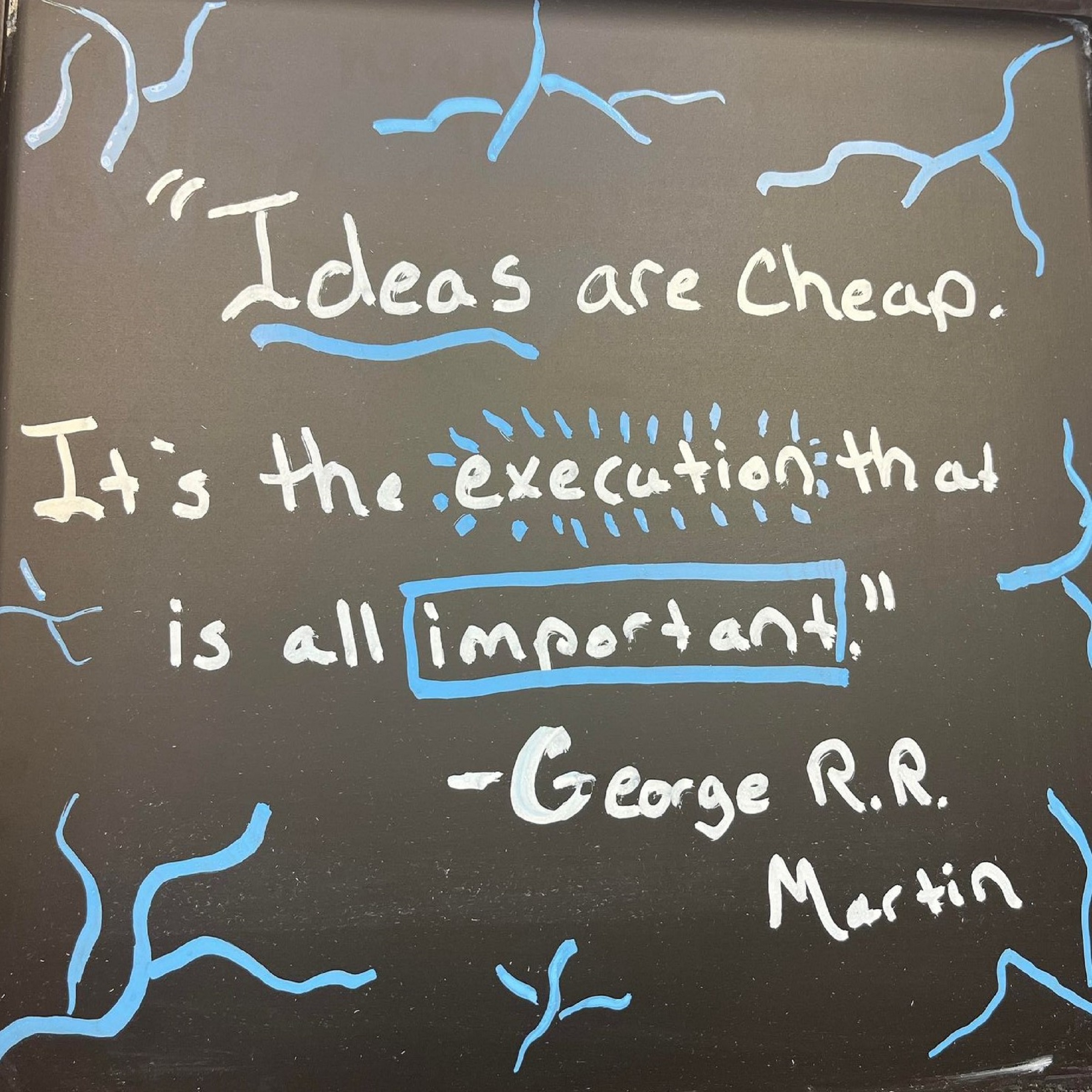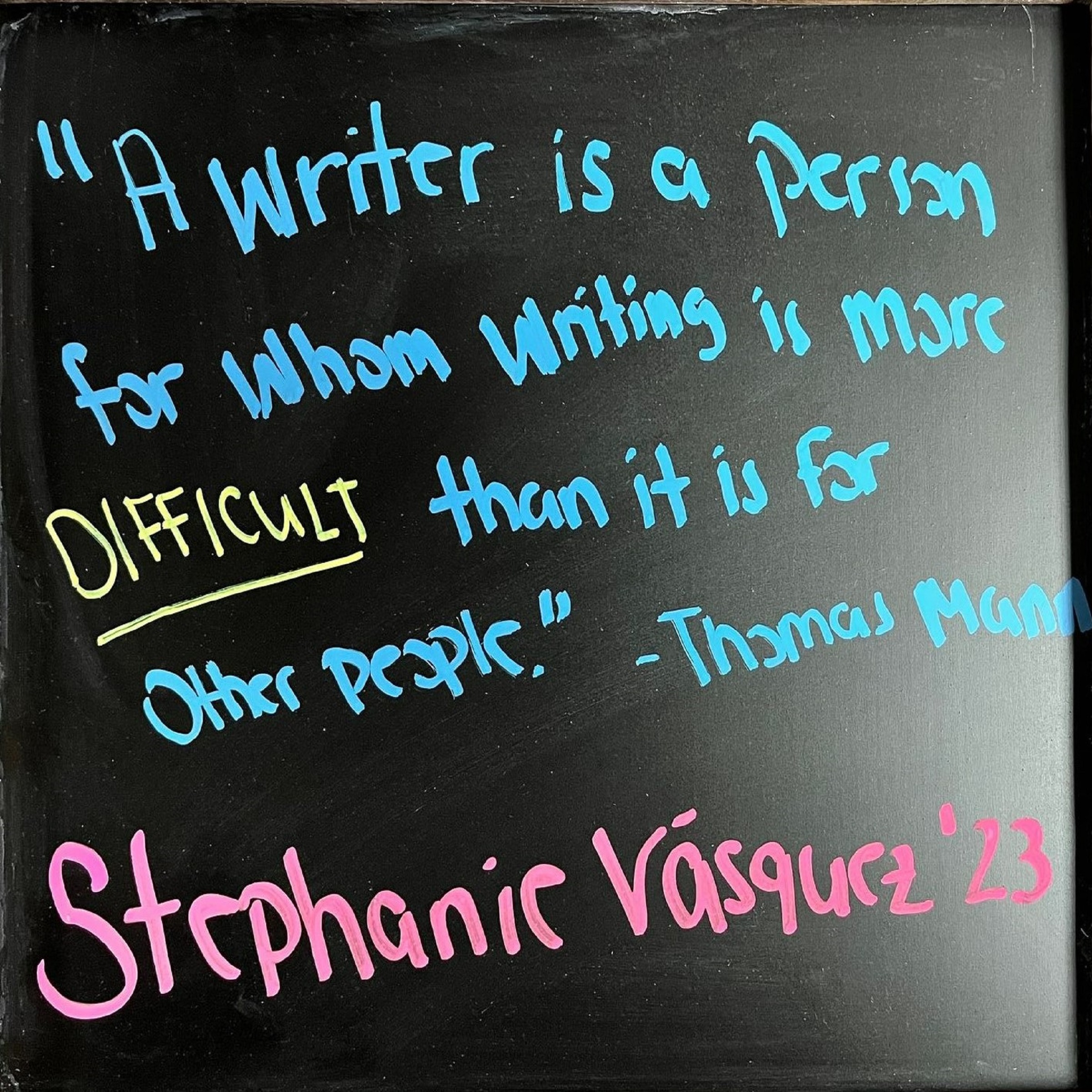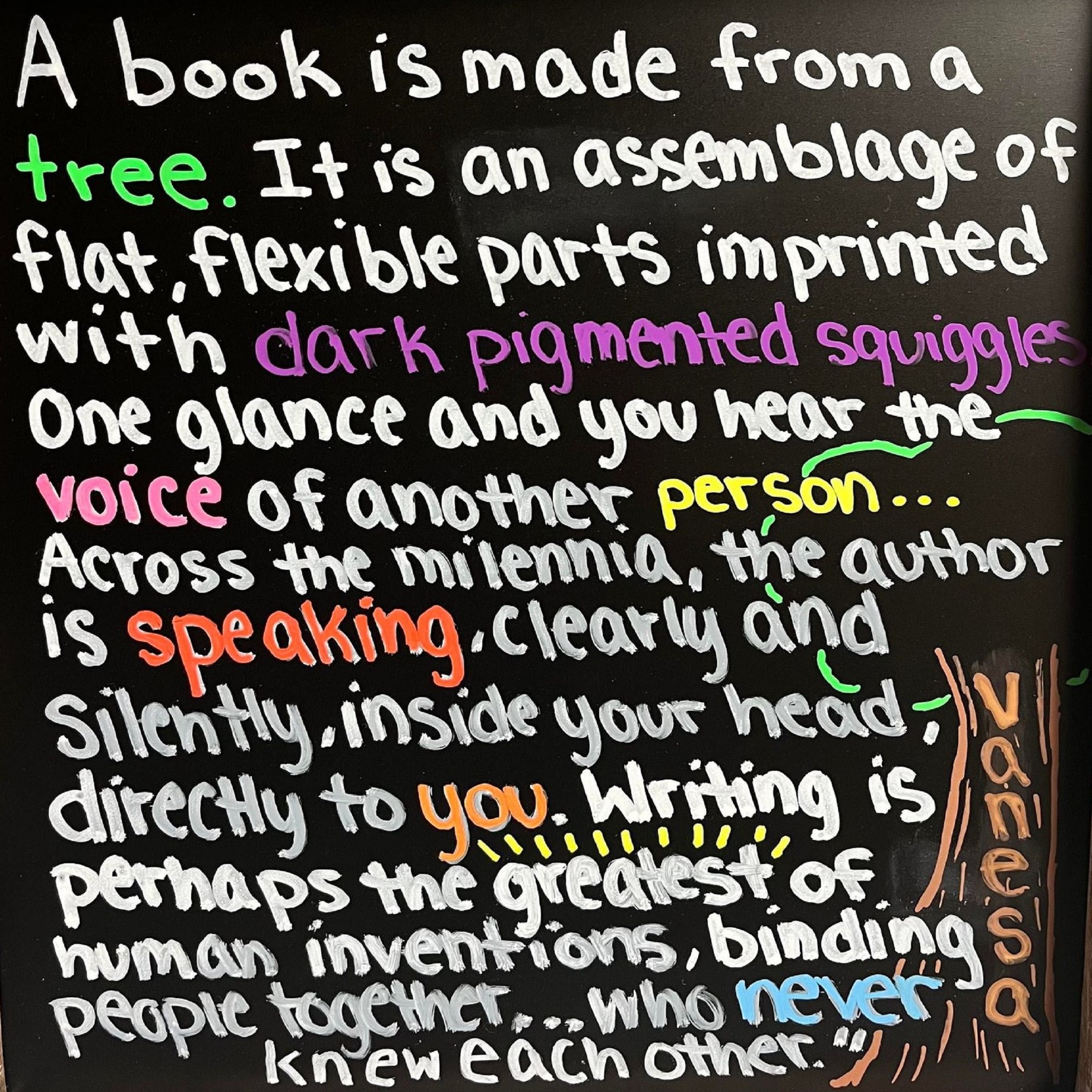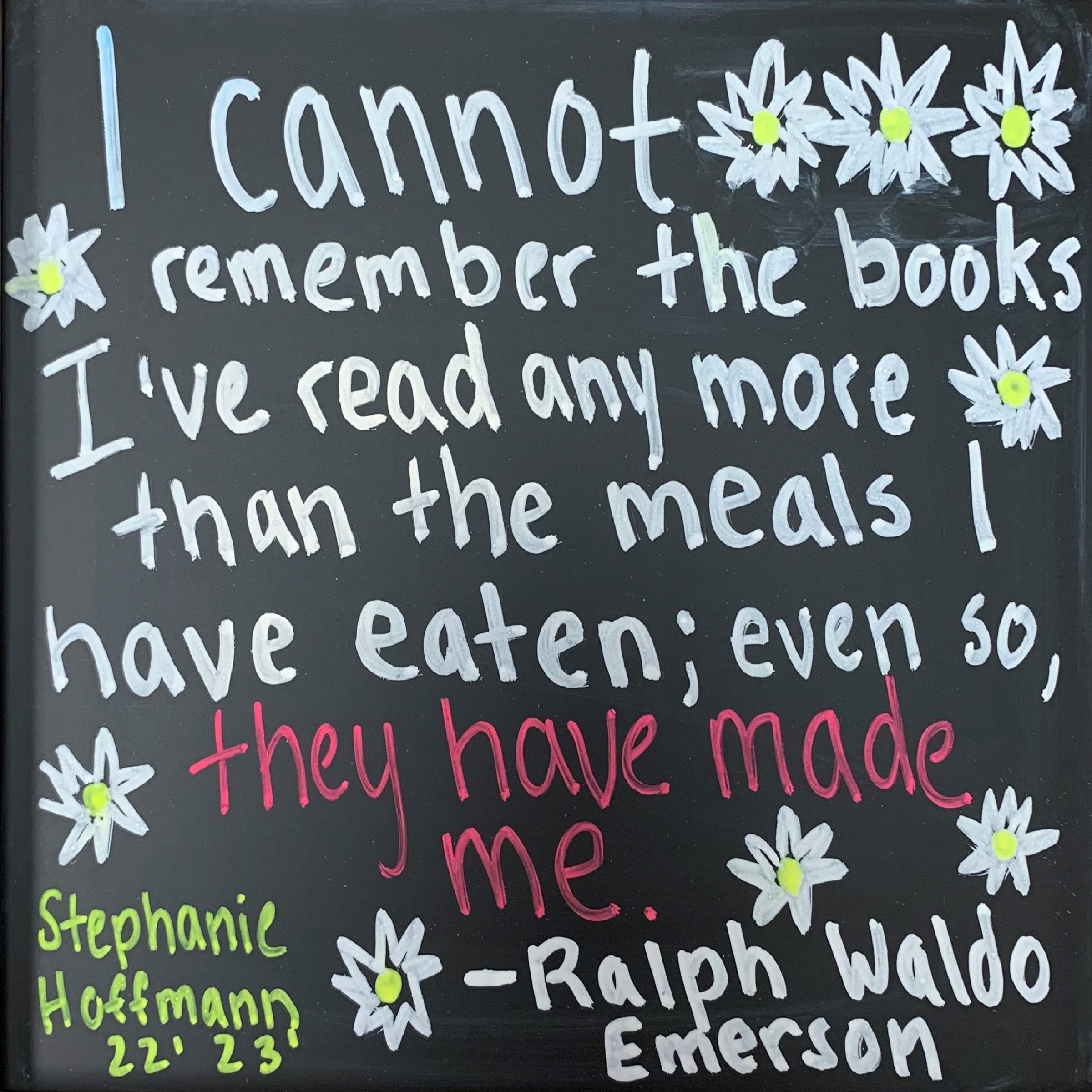| Vague Word | Stronger Alternative |
|---|---|
| a lot | many, numerous, countless |
| bad | detrimental, harmful, negative |
| big | significant, substantial, considerable |
| change | alter, modify, transform |
| do | perform, execute, carry out |
| environment | setting, surroundings, context |
| everyone | all people, the majority, most individuals |
| feel | perceive, sense, experience |
| get | receive, obtain, acquire, possess |
| good | beneficial, advantageous, effective |
| interesting | engaging, captivating, compelling |
| know | understand, recognize, comprehend |
| much / many | a considerable amount of, many |
| nowadays or in today’s world | currently |
| nice | pleasant, enjoyable, agreeable |
| many | numerous, countless, a variety of, (or a specific number) |
| really | genuinely, truly, markedly, significantly, notably |
| shows | demonstrates, illustrates, reveals |
| small | minor, slight, negligible |
| things | aspects, elements, factors |
| usually | typically, generally, customarily |
| very | extremely, particularly, exceedingly |
| use | utilize, employ, apply |
Category: Resources for Freshmen (Page 1 of 2)
Check out this resource created by our expert writing tutors! It breaks down the difference between passive and active voice, offers powerful verb lists, and provides practical strategies for transforming passive sentences into strong, active ones. Whether you’re refining an academic paper or sharpening your writing skills, this guide will help you craft clearer, more engaging sentences.
Citation Machine in Google Docs
Did you know that there is an ad-free citation machine build into Google Doc? You can access for free, and it will even generate your in-text citations (just not the page numbers). Check it out! Just be sure to double check your work!
By Myracle Brunette
Imagine this: You finally finished writing a paper for a class. Once you go to revise it, you come across a sentence that feels like it just goes on and on without any breaks or pauses. You might catch yourself struggling to understand what’s trying to be said. You might even catch yourself saying, “wow that’s a really long sentence.” If so, you’ve most likely encountered a run-on sentence. Run-on sentences are common to run into when it comes to writing. If you happen to have any in your paper, don’t worry. We’ve all been there, and they can easily be fixed.
What Really Is A Run-On Sentence?
Now you might be wondering, “what really is a run-on sentence?” A run-on sentence is when two independent clauses are joined together improperly. They are sentences without proper punctuation or appropriate conjunctions to separate them. This can involve using too many conjunctions and omitting punctuation such as commas, periods, and semicolons. This can lead them to oftentimes lack clarity and confuse the reader. There are 2 different types of run-on sentences. They are fused sentences and comma splices.
Fused Sentences:
A fused sentence is when two or more complete sentences are joined together without punctuation. They are fused together as if they were only one thought, and this can change what the writer was actually trying to tell the reader. For example, “I like dogs dogs can smell sometimes.” This sentence contradicts itself and can confuse your reader. Instead, the sentence can read, “I like dogs, but they can smell sometimes.” Notice how I just added a coordinating conjunction to join the two ideas and transform the sentence. You can also break up the sentence completely with a period to make it two separate ones, but since the writer is saying that they like dogs and then states something that they dislike about them, it would be best to use “but” to show that idea better.
Comma Splices:
A comma splice is when two or more complete sentences are incorrectly joined by just a comma. It normally looks like this: “main clause, main clause.” For example, “I love to read books, I also enjoy watching movies.” We can fix a comma splice the same way we can fix a fused sentence. We can either make the two clauses into two complete sentences, use a coordinating conjunction, use a semicolon, or use a subordinating conjunction. The ideal way to correct the sentence I provided would be to simply break it into two complete sentences.
How Can I Fix My Run-On Sentence?
In case you missed the examples I provided of run-on sentence solutions, I’ve listed them below:
- Check for Comma Splices
- Utilize Coordinating Conjunctions
- Use a Semicolon.
- Utilize Subordinating Conjunctions
How To Avoid Them:
Working on run-on sentences can be hard, especially when trying to avoid them. I’ve provided some resources below to help you exercise your brain a little. The more one works on improving their skills, the faster they improve them.
My personal favorite resource is Grammar Bytes. This website has some exercises that can help you work on your skills for more than just run-on sentences. It also provides more rules on comma splices and fused sentences. https://chompchomp.com/exercises.htm#Comma_Splices_and_Fused_Sentences
We also recommend Purdue Owl as a great resource for help with run-ons.
Litcharts is a great resource if you are new to navigating the works of Shakespeare. The website offers the original full-text of most of Shakespeare’s plays with modern translations on a parallel screen. The lines are color-coded, which makes it easy to read and compare the two versions of the text. Additionally, you can get the act, scene, and line number by hovering over any piece of text. It also gives you the full reference for the webpage, just in case you’d like to use any of their modern translations in a paper. Check it out!
Shakespeare Translations at LitCharts
- Philosophy papers are not reports, or research papers, or reflection papers. Generally, they ask students to use their reasoning skills to defend a particular idea or test the validity of an argument. Considering that, look at the prompt. Does your instructor want you to apply a philosophical argument to a new situation? Does the prompt ask you to amend an existing argument? Or object to an argument? Read the prompt closely and take a look at these frequently used tasks to better understand the prompt.
- Choose a stance to argue for or against. Do not choose both sides or neither side. Playing the middle-ground can be much more difficult and might require a longer paper.
- Have a precise thesis statement that defines your stance, how you will prove your stance, and why your stance should matter to your reader. Check out some adaptable thesis templates here.
- Define any abstract terms, concepts, or perspectives before you dive into your draft. Have the definitions accessible so you can use them correctly to support your reasoning. Make sure you are using philosophical terms correctly. Here’s a brief guide with frequent concepts. Here is a guide with vocabulary to help you describe arguments as you analyze them.
- Make a detailed outline before you start writing. When dealing with abstract concepts, it’s easy to go on tangents or lose focus. One possible way to approach these papers is to use the They Say/I Say method, which is further explained here. Another point-by-point method of organization is here.
- Use your instructor’s office hours once you have a detailed outline to make sure you are on track for success.
- Write a brief introduction. Be concise and respond directly to the main question within the prompt.
- Don’t use too many direct quotes. Remember, philosophy instructors generally want to see your reasoning skills, not your summary skills. Select and integrate material from others that best illustrates or supports your idea. Don’t let them overshadow your ideas.
- Communicate your stance and thought process clearly. Avoid all vague words (a lot, stuff, things) and empty language (basically, just, great, fine) unnecessary adverbs (really, very, importantly) that can distract your reader. Make sure you are choosing the most appropriate words.
-
-
- Use examples and illustrations to demonstrate your thoughts.
- Use transitions and signposts to indicate how ideas relate to each other.
- It’s wise to have a peer review your argument to make sure it’s clear with no gaps in your logic.
-
- Be confident—don’t preface your ideas behind phrases like “In my opinion,” “I believe,” or “For me at least,” because it discredits your argument.
Other Resources
| Student Sample Papers | An Annotated Student Sample Paper |
| Common Issues in Philosophy Papers | Examples of What Not To Do |
| Strong Writing vs. Poor Writing
in Philosophy Papers |
Examples of Student Writing |
- Read the prompt closely to make sure you understand what you need to do within your essay. Generally, in a rhetorical analysis, your instructor wants you to determine why text is or isn’t effective in persuading the audience. However, you may not always be analyzing text—you may instead be asked to look at speech or an even an image. Sometimes the instructor will present you with the item you have to analyze, but other times you may have the opportunity of choosing your own item. Both situations have pros and cons. Is the prompt asking you to do a task like this? If so, it may be a rhetorical analysis. Check out this sample prompt here.
- Read the text closely. Annotate as you read in order to identify parts of the text that you found to be persuasive or that stood out. Those memorable moments are likely rhetorical devices or appeals. Additionally, try to understand the author’s thesis and organizational strategy as you read. Does the presentation of topics work? Are there any images used? Are any stories used? Are there jokes or word-play? Is the word choice crafted in an unusual way?
- Determine the purpose of the text you are evaluating. Because you are examining the effectiveness of a text, you first need to understand its aim in order to know if it is truly fulfilling its purpose. What is the author’s intention? What is the author trying to convey to the audience? Are they informing their audience? Entertaining their audience? Persuading their audience? Is that goal achieved?
- Determine the target audience. Students struggle with this because they often assume that there is no target audience because the text will almost never state “I am trying to convince this specific population about this specific thing.” Rather, this idea is usually implied or hidden in the subtext.
- First, ask yourself, what is this text about and who would be motivated to read this text? For example, is it the text about updated baseball regulations? Then players, coaches, and sports enthusiasts would be interested.
- Where was this text published? What other materials does that source publish? Who generally reads the content that is published? Is it in a scholarly journal? A newspaper? A magazine? The publisher usually indicates something about the target audience.
- When and where was it published? What was happening at this location when the text was published? What issues were potential readers interested in?
- Who is the author? What makes them a credible source on this topic? What else have they written? Who generally reads their writings?
- How much background knowledge does the author present. Are they writing for content experts or a more general audience?
- In the text, are there any references or allusions the author makes? For example, are there references to shows, events, or trends from this generation or another generation?
- Don’t summarize, but analyze. As you start to outline your first draft, it’s important that you do not focus on the content of the text. You should instead be writing about the composing choices that make the text effective. This is difficult for many students, since high school trains us to demonstrate our knowledge by reciting what was presented. Even if you picked the text you are evaluating, you do not need to summarize it to your instructor. A sentence or two of summary in the introduction is typically expected, because it orientates your reader. Generally, you do not use multiple body paragraphs to describe in detail what you read. Instead, you are going to focus how the text was crafted to persuade the target audience.
- In order to prevent your writing from falling into summary, we suggest you use EMPHATIC ORDER, not Chronological Order, so you will NOT have an essay that mirrors the presentation of topics in the original text (For example, “First, the author presented this idea, and then this idea.”). Instead, organize your essay based on frequency or importance of the rhetorical devices used. (One powerful moment was the use of ethos at in the middle of the text . . . Another important element was the way anaphora was used at the end . . .) You can read more about organizational patterns here.
- How do you analyze the text? Look for the following elements in your text. You probably learned these items in class; however, if you did not learn some of these elements in your class, DO NOT use them.
- Rhetorical appeals: Ethos, Pathos, Logos, and Kairos
- Ethos: Are there any places in the text that made you want to trust the author? Does the author demonstrate their credibility or moral code?
- Pathos: Are there any places in the text that caused you to laugh or cringe? Was there any section that made you feel excited or sad?
- Kairos: Are there references to other events that are happening? What made this text relevant when it was published? How is the text “timely”?
- Logos: Are there any numbers, facts, or pieces of expert testimony used? Does the author use any logical reasoning?
- Obviously, logic is a crucial element of an argument. One way to check logic is to look for fallacies or specific flaws in the way logic is used. For example, circular reasoning and proof-by-too-few examples are common fallacies. Here’s some examples of poor logic.
- Obviously, logic is a crucial element of an argument. One way to check logic is to look for fallacies or specific flaws in the way logic is used. For example, circular reasoning and proof-by-too-few examples are common fallacies. Here’s some examples of poor logic.
- Rhetorical appeals: Ethos, Pathos, Logos, and Kairos
- Rhetorical Devices: anaphora, anthesis, hyperbole, pleonasm, oxymoron, etc. Aside from the appeals, are there other rhetorical devices that convey the information in a specific way to elicit a response from the audience? Some of them may look familiar because they are also literary devices.
- Other Rhetorical Strategies or “Slanters”: euphemisms, down-players, and innuendo. These are some specific techniques used to subtly portray information in a positive or negative light to a target audience.
- Have a strong thesis. Here is a general template and sample of a thesis for a rhetorical analysis paper:
- Templates: The author uses ________, ________, and ______ to effectively persuade the audience on this topic.
- Example: Smith uses ethos, pathos, logos in his article “Updated Baseball Rules Strike Out” to persuade his readers that the new regulations in baseball hinder the game-play.
- Use the present tense when describing actions in the piece.
- Use the present tense when describing what the author does.
- Write the author’s name correctly. When you reference the author, write their first and last name the very first time you reference them. Use only the last name when referring to the author later in your paper.
- Use direct quotes from the text. Generally, it’s better to use the quotes than to paraphrase so your reader can see the exact form of rhetoric. Since you are talking about how a text is crafted, the reader needs to see the original text. Here’s some examples of integrating quotes.
- You must provide an explanation of each quote. What is the significance of the quote? What does it show or how does it demonstrate rhetoric?
- Make sure you cite your quotes correctly by using in-text citations. Check out this quick guide. If you have multiple works by the same author, you’ll need to include some extra information.
- Indicate titles correctly. Titles of larger works or containers (like books, plays, anthologies) are italicized. Shorter works within containers (like articles, chapters, poems, short stories) have “quotes” around them.
- Use strong verbs. Let’s avoid “is”, “are”, “has”, “does”, and maybe even move away from “says” and “states”. Check out the list of strong verbs for literary essays here.
- Use your professor’s office hours. Once you have a rough draft, go to your professor’s office hours and see if you’re on the right track. Don’t skip this step. Professors may look for different qualities in papers, and you need to know what they expect from you.
- Beware of the internet and Chat GPT. I know students will browse the internet as a way to get their own ideas flowing. Don’t do it! But, if you can’t resist this temptation, then keep track of each source you read and remember to cite it correctly if you use that idea or a very similar idea anywhere in your paper. Remember, your analysis is your opinion on how devices were used in this text; you don’t need to know what other people think about this text. Instead, learn the rhetorical appeals, devices, and strategies because they will help you approach the text from a critical perspective.
- Take full advantage of peer review or meet with a writing consultant. A reader can help you see the gaps in your argument or indicate where more explanation is needed. They can also help your analysis become more thorough by questioning your claims and adding their own perspectives on the quotes you use as evidence.
- Make sure you are conforming to rules of the format indicated by your instructor. Usually, composition instructors use MLA, but sometimes they use APA. Check out our style guides if you need more information.
Other Tools and Resources
| Student Sample Papers | An Annotated Sample Paper with Essential Components in Footnotes
An Annotated Sample Paper with Essential Elements in Comment Boxes |
| Paired Samples | This website annotates the rhetorical appeals in the original text and then it shows the final essay. |
| Graphic Organizer | A table to keep track of rhetorical elements as you read. |
Academic Word Lists
Most freshmen find out the hard way that academia feels like a whole new language, and while it’s technically still English, the scholar-specific vocabulary may be unfamiliar and difficult to navigate. Terms that are common topics of conversation in college classrooms—like ideology, cognitive, intrinsic, longitudinal, seminal, and salient—may pose barriers. It may be even more difficult for students to adopt this academic language into their own writing. For that reason, we recommend you check out this webpage. Try not to get overwhelmed when you click the link, because it has several word lists and it may feel like you’re scrolling forever.
However, there’s two portions of the page you should check out and explore the links:
- Academic single word lists: general purpose
- Academic multi-word lists: general purpose
Here you will find multiple lists of frequently used academic terminology as well as phrases, transitions, connectors, idioms, formulaic expressions, and words that are commonly used together in academic settings. It’s a wealth of knowledge, and though the webpage can be a little hard to navigate, it’s worth exploring. These terms can help you feel more comfortable with academic discourse, and they can elevate your academic writing when you weave them into your own work.
by: Eamonn X. Wizeman
As writers we face many struggles. Every time we start typing, we may start asking questions like: How do I say what I mean? What adjective best describes an object? Is this argument strong enough? Does my analysis make sense? These questions sneak up on everyone, and you’re not alone when you ask them. We’d all prefer that we could just write without these problems facing us at every turn, and while we cannot completely avoid them, the remedy to writer’s block often comes before we even start to think about what we write.
Reading is a vital skill for everyone, a fact that people often forget. We cannot write without the ability to understand what we are writing about. However, this comes with its own problems. As one’s academic career progresses it may be common to find journal articles or textbooks with confusing language. Perhaps it is too wordy or there are words that you do not yet know. Whatever the problem may be, there are tools to help.
One of these tools is a website called Rewordify. Rewordify allows you to copy and paste a paragraph that you are having trouble comprehending and will break down words that are difficult to understand. For example, a sentence that uses the word “defamation” will be replaced with the phrase “saying lies that hurt someone else’s reputation.” This defines what defamation is but does so in a manner that fits it into the text. By breaking down bigger words, Rewordify can help a reader understand lengthy articles about topics that have a lot of vocabulary that they are not familiar with. Further, Rewordify will generate vocabulary quizzes for students looking to expand their horizons. This can help students improve their lexicon, which in turn improves their writing.
A tool like this can be useful for people, such as myself, who often find themselves re-reading the same paragraph several times. Reading comprehension is the first step in writing and is an integral part to the formation of ideas on any topic. If you cannot understand what an article, book, or study is about, Rewordify is a mechanism that can help you comprehend confusing text, which is a skill that is vital to pristine writing.
Check it out: Rewordify
by Stephanie Lehner and Caitlin Doughton
As Biology and Philosophy double majors in SJLA, we have gained experience writing both scientific and humanity-based papers; however, we recognize that transitioning between the two often can be difficult. We would like to provide a guide on how to tackle this task. While it is true that the two writing styles vastly differ in some regards, they also share similarities! As in all writing, it is important to have a clear purpose, and thus, pick a specific topic to discuss. For example, rather than writing about Plato’s Symposium in its entirety, the specific topic of Eros (Love) in the Symposium can be analyzed. Similarly, rather than writing about cells in general, the specific topic of embryonic stem cells can be researched.
When writing scientifically, it is important to have succinct sentences and strong verbs that convey the topic at hand. Although long and flowy sentences may sound better from the writer’s perspective, such a structure may force readers to analyze each sentence multiple times before they grasp the true meaning! Therefore, it is essential that sentences only include information that is necessary for properly interpreting the topic. Including and referencing experimental and statistical data also improves a scientific paper, for readers can better understand a topic when evidence is provided. In scientific writing, a certain format is often followed: abstract, introduction, methods, results, and discussion. This outline allows for a smooth progression of thoughts, moving from general information about the topic to specific information about data. It is also vital to conduct research on other literature regarding the topic at hand to provide background knowledge. Doing so will increase the paper’s credibility if similar results have been obtained in other experiments. We find PubMed, Google Scholar, and Science Direct to be useful websites for obtaining peer-reviewed articles and would recommend them as a strong starting point.
Conversely, when writing in the humanities, students often have more creative liberty and can use a variety of adjectives and adverbs to convey imagery. Yet, students should also be cognizant of speaking succinctly because the inclusion of “fluffy” words or sentences detract from a paper’s purpose. Although humanities papers often display more linguistic creativity than scientific papers, it is important to recognize the fine line between words that add to versus words that take away from the paper’s message. In the humanities, a specific structure is generally utilized when writing papers: introduction, body paragraphs, and conclusion. Just as the abstract summarizes a scientific paper, an introduction gives insight into a humanity paper’s central discussion. Thus, it is vital that papers have strong thesis statements, so readers have a clear direction. In fact, a thesis statement may cause readers to decide if they do or do not wish to continue reading your piece! Lastly, resources, such as the library’s database and collection of books, along with Google Scholar, are helpful for humanities papers. We also find Purdue’s OWL’s Sample Papers to be an extremely helpful resource for better understanding how to properly format a paper.
As always, it is important not to worry oneself when writing a paper or to overthink when starting the writing process. We always find it helpful to write down preliminary ideas and goals for a paper in the format of an outline. Doing so allows us to have a clear focus regarding the paper’s topic and helps the writing process to go much more smoothly. At The Writing Center, we have benefitted from making appointments with other writing consultants to help with our own papers. As such, we understand the importance of helping other people with their writing too. If you are ever having trouble starting, working on, or finishing a paper, The Writing Center has numerous resources to help!
Good luck and happy writing!













